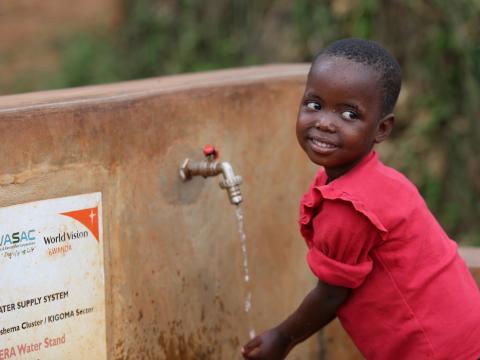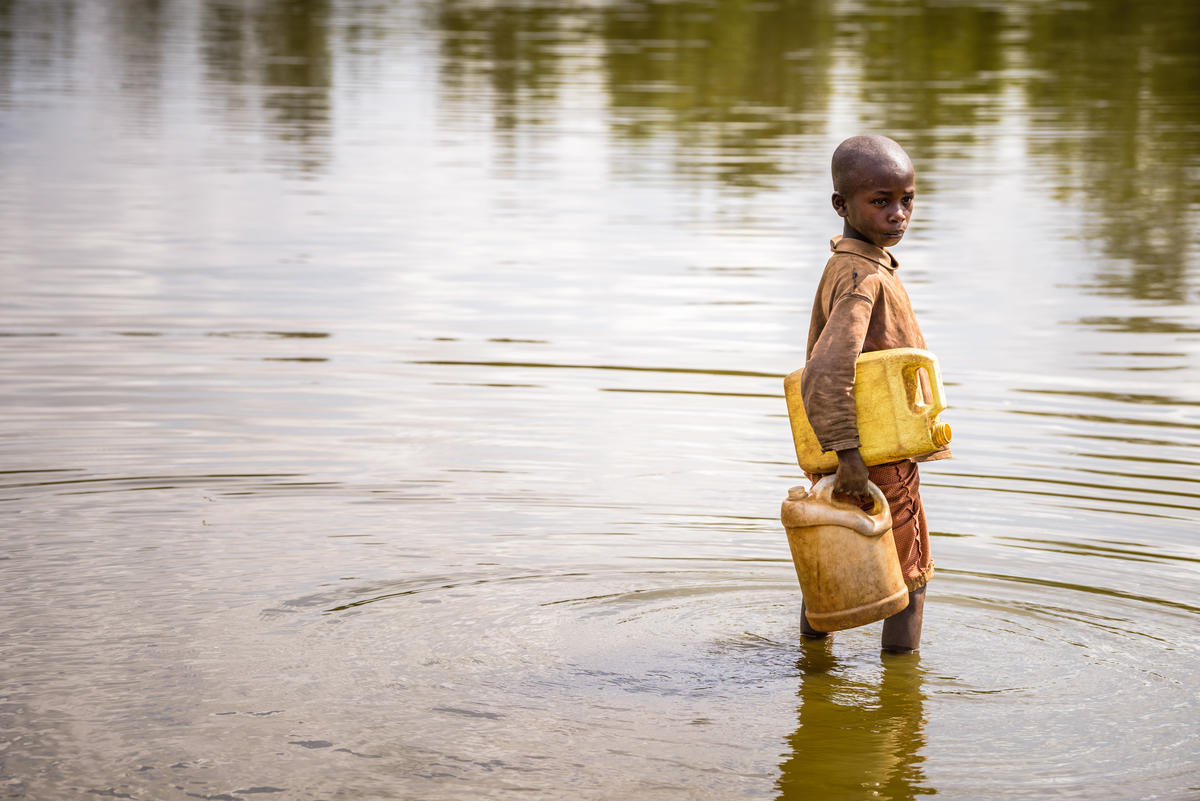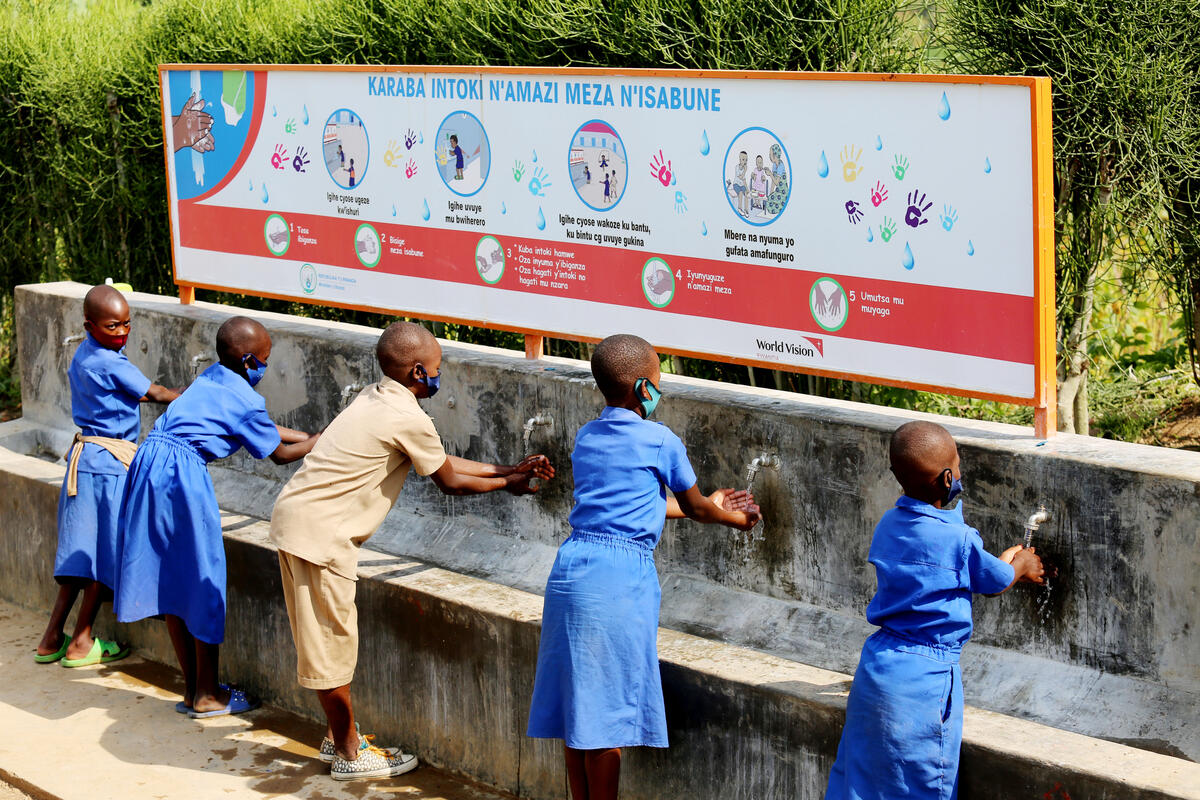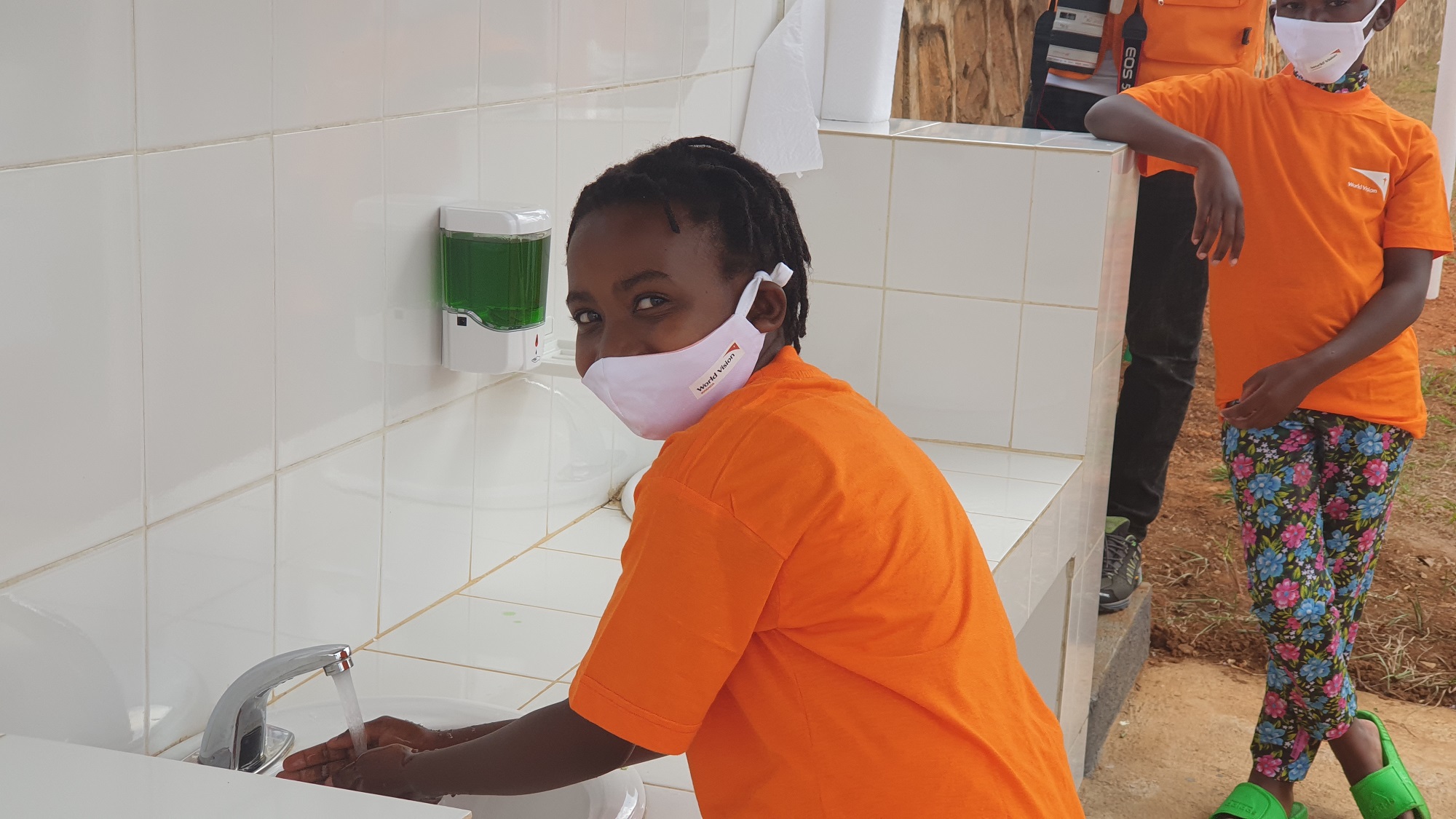
Here’s how (and how not) to bring water to all of Rwanda
By Sean Kerrigan
When, as we did in 2015, you publicly commit to reaching 50 million with clean water by 2030, you’d better have a solid plan. World Vision’s plan was to build on the water, sanitation and hygiene work we had been doing for several decades around the globe. But we knew we needed much more investment, many more partnerships and additional technical capacity to make this water ‘moon shot’ a reality.
Much of the need was in Africa, and when we discovered that the Rwandan government also had ‘getting water to everyone’ as part of its national strategy for transformation we got in touch. We wanted to discuss how our audacious goal could contribute to theirs.
About half the people in rural Rwanda did not have clean, safe water, and World Vision was providing sustainable water sources to about 70,000 a year. At that rate it would take many years before everyone in our programme areas received water. Following our public commitment in New York, we agreed with the Rwandan government that, with their help and help of local authorities, we would provide water to 1m people—about 1/6 the total need in the country! [Read the announcement here]

Another reason we picked Rwanda was because it is a small country – with a population of around 12 million people - one where we have worked for 26 years. If our water ‘moon shot’ worked here, perhaps it would provide us with a model we could replicate elsewhere?
This was certainly not business as usual for us. The project was ambitious and it was terrifying.
In 2020, the figure of people who received clean water from us more than tripled to 234,000. Our offices around the world and private donors worked hard to raise the $30m that we needed to fund this plan. The Rwandan Government also contributed a significant amount of support and funding. These investments mean that, in a few years, 1 million men, women and children will have the clean water we promised them.
It’s remarkable that the goal is in sight! [Watch a video here] In the past five years we have all learned a lot of lessons of what to do and what not to do, lessons we are already sharing with our colleagues in Zambia and Ghana who are considering their own water ‘moon shot’ programme.

Here are just a few things we learned:
- Without a coalition of the willing this target would not have been achievable. World Vision used to have a reputation for working alone in water delivery. A programme on this scale has only been achievable and sustainable through genuine partnerships: ministries of health, finance and infrastructure; local government; water infrastructure; private and corporate donors; the local community. We all made commitments to reach this goal. We’ve done this together.
- A solid business plan helps enormously. It is challenging to set business goals when it comes to humanitarian work, but doing so for our water, sanitation and hygiene programming means we have so far reached 20 million people with clean water and millions with sanitation and hygiene programming over the past five years. Relief and development is complicated, but I can’t recommend a business plan approach enough.
- Don’t assume that raising funds for a project this big means that donors won’t give, and give again. Success breeds success, and the more we were able to show that their investment was leading to impact the more people were willing to give to help reach the target.
- Everyone concerned with water, sanitation and hygiene provision in the country had not focused enough on providing basic services, especially in health facilities and schools. When COVID struck, there was a great need for handwashing stations in almost all public places in the country. We partnered with the Ministry of Health and local government to set up handwashing stations in hospitals and health centres.
- When the whole country has access to a basic water supply, it doesn’t mean we stop there. There will still be much more for us all to do. When my sons asked our sponsored child what his biggest dream was, he answered: “Water piped into my house”. The disturbing thing about that for me was when he said it his family laughed because they could never imagine it happening. Water could come to the community, but never his home. Our collective vision needs to be bigger than just basic water delivery.

Recently we met with a senior government minister to discuss the funding we had received from the government. He had some serious questions for us about how we used the money. We were confident in the work we were doing, but naturally nervous. At the end of that meeting he said to our team, “I don’t know where you grew up, but where I grew up I had to walk long distances for water. Children shouldn’t have to do that.”
I couldn’t think of a more perfect vision statement for what the government, donors, partners, the community and World Vision are all working for in Rwanda, and everywhere else we work.
To learn more about World Vision’s Water, Sanitation and Hygiene work click here
To learn more about World Vision’s work in Rwanda click here
Sean Kerrigan is National Director at World Vision Rwanda and before that was World Vision International’s Senior Director, Water Sanitation and Hygiene. Follow Sean on Twitter @spkerrigan
